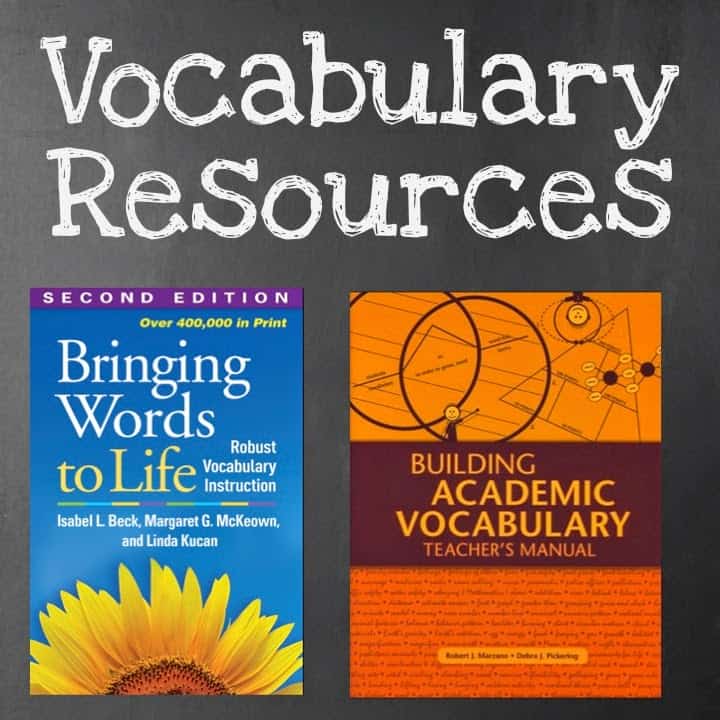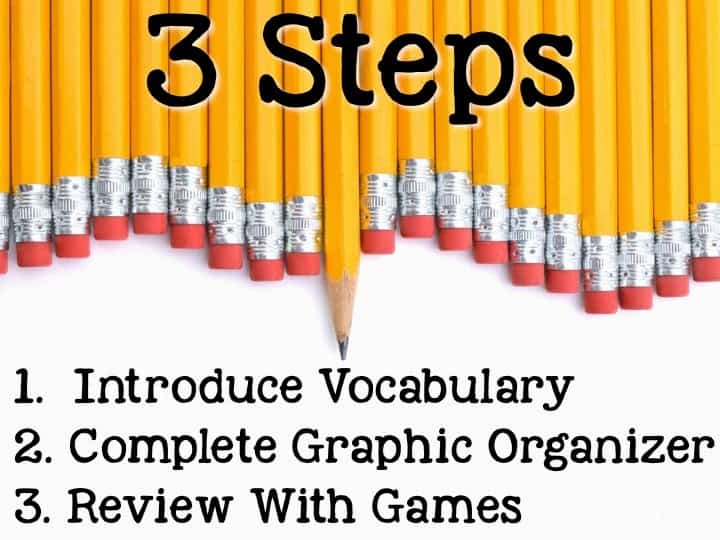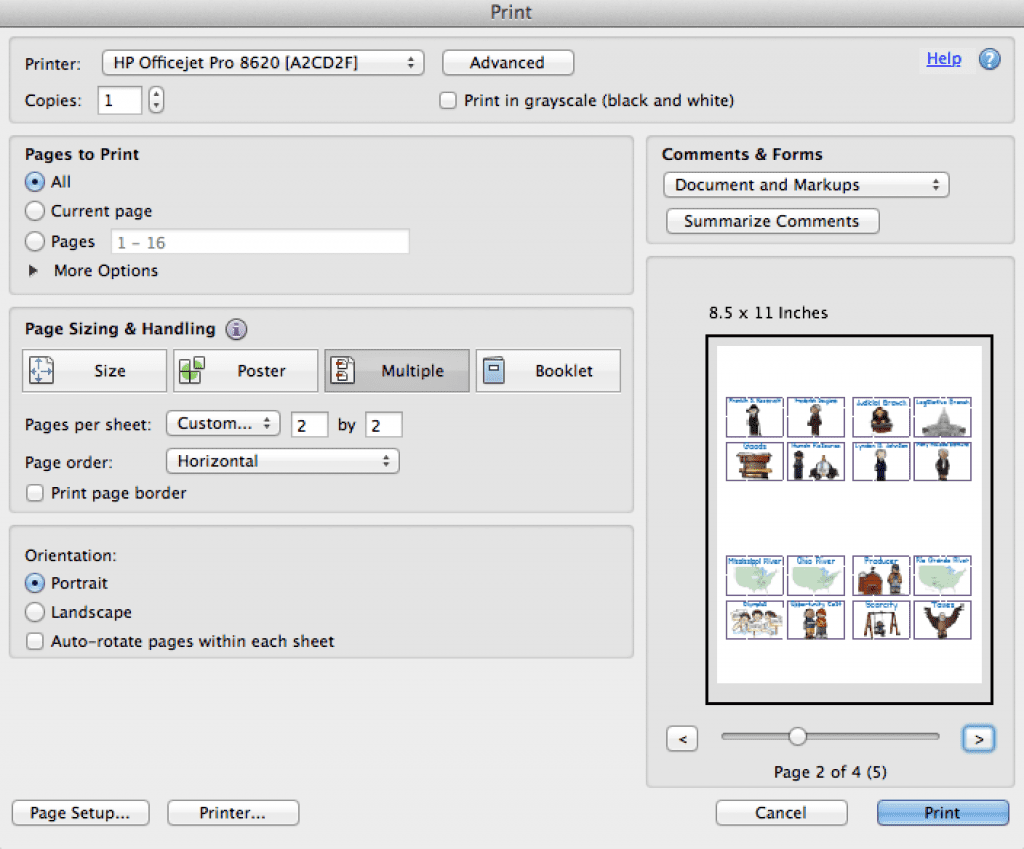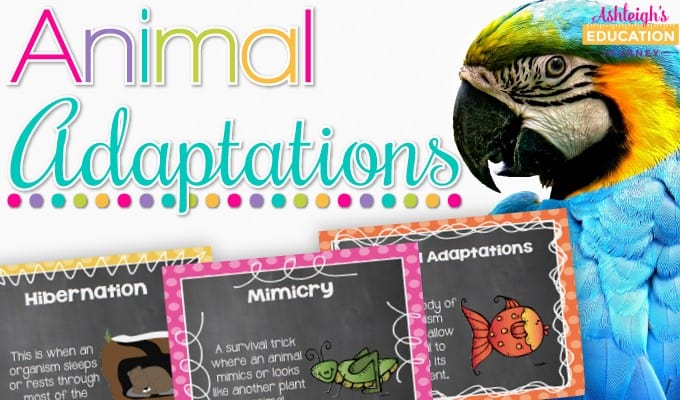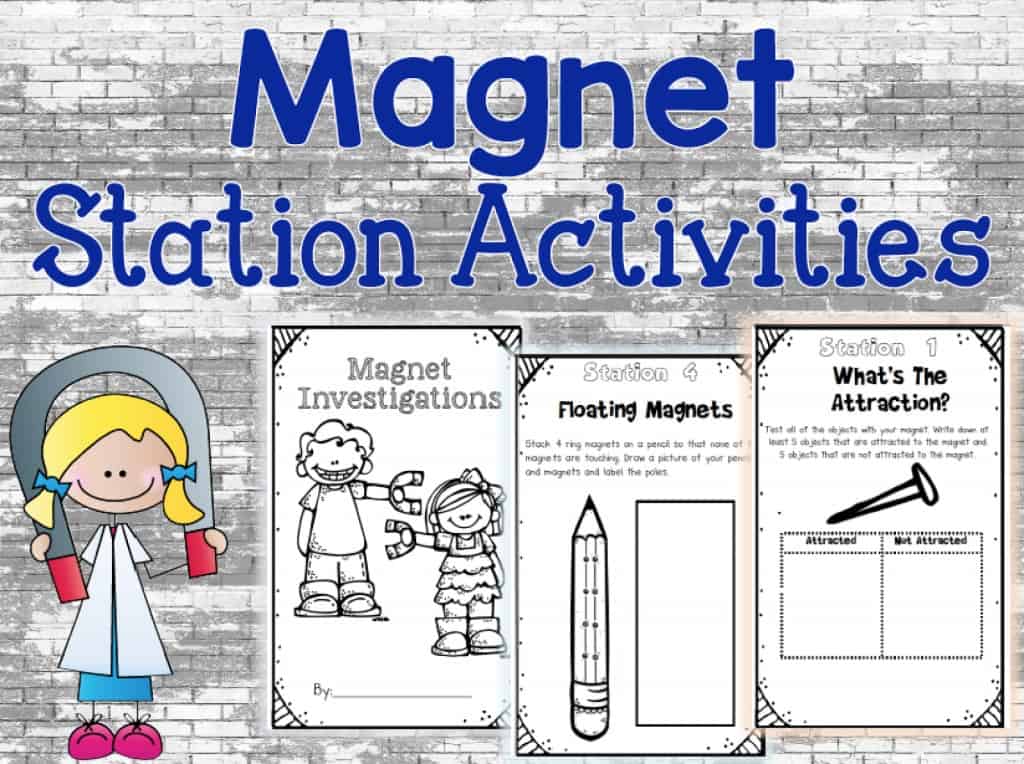It’s no secret that vocabulary is a major predictor for student success. Unfortunately, academic vocabulary has always been one of my students’ greatest challenges. Academic vocabulary words are the words that are traditionally used in academic text, which are words that are not common in everyday reading. These words are important because they help students comprehend text across different content areas such as social studies and science.
Two books that have completely transformed my vocabulary instruction are Bringing Words to Life and the Marzano’s Building Academic Vocabulary. One of the biggest takeaways from my reading is that vocabulary instruction must be intentional, purposeful, and planned.
One of my favorite strategies for teaching academic vocabulary is frontloading or preteaching vocabulary. This technique is highly recommended for ESL or ELL students, but I’ve found that it’s highly beneficial to everyone. Frontloading vocabulary is a before-reading strategy where you introduce words to students through photos, analogies, metaphors, and symbols. When you introduce the words, give students time to discuss the words with partners (think/pair/share), small group, whole group. Pre-teaching vocabulary is not having kids look up definitions or other boring practices.
But First, We Plan
I’ve learned that I have to plan my vocabulary instruction and absolutely cannot wing it. When I start without a written plan, I don’t follow through. The first step in planning academic vocabulary instruction is to create a list of academic vocabulary to be taught in social studies and science. Below you can see an example of my social studies and science vocabulary terms. You can click here for a PowerPoint version or here for a PDF version. Since our standards and students are so varied, you’ll have to find a system that works for you.
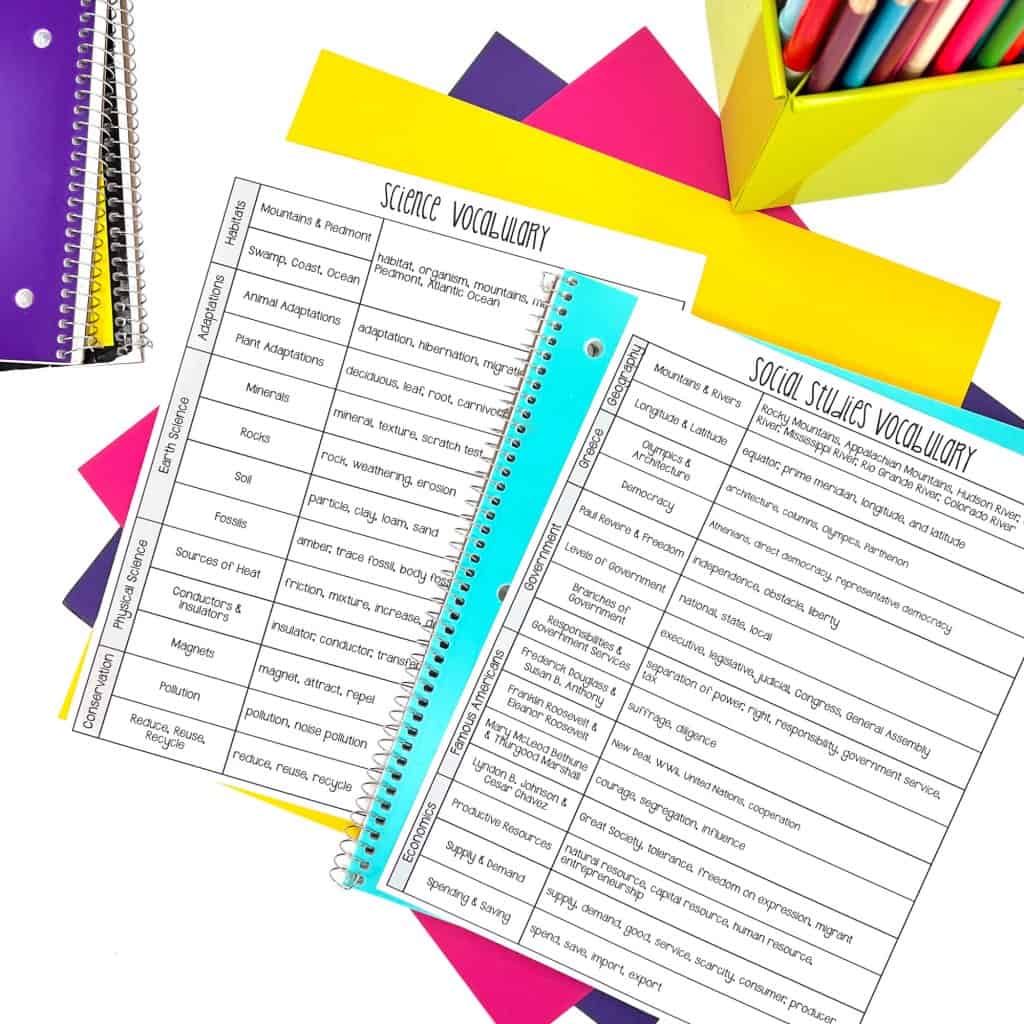
When teaching vocabulary, keep it simple. Whenever I try something elaborate or time consuming, I end up quitting by Halloween. My approach to teaching academic vocabulary is very basic and consists of three steps.
Step 1
Introduce vocabulary. During this time, it’s essential to keep students’ interest, so keep this portion of the lesson VERY brief. Try to present the word in an engaging way as possible, and then give examples, pictures, symbols, synonyms, or examples of the word. Allow students to briefly discuss the word with a partner or a small group (who they sit with at their table). My favorite strategy is think, share, pair, because it’s so quick, easy, and effective.
Step 2
Add the word to students’ notebooks. Since I’m limited on time, copies, and paper, I don’t print anything out for the vocabulary. I simply have students draw a version of the Frayer Model in their notebooks. We fit two boxes on one page, and we almost always add a definition, example, and picture. In the fourth block we may use synonym, antonym, non-example, or sentence.
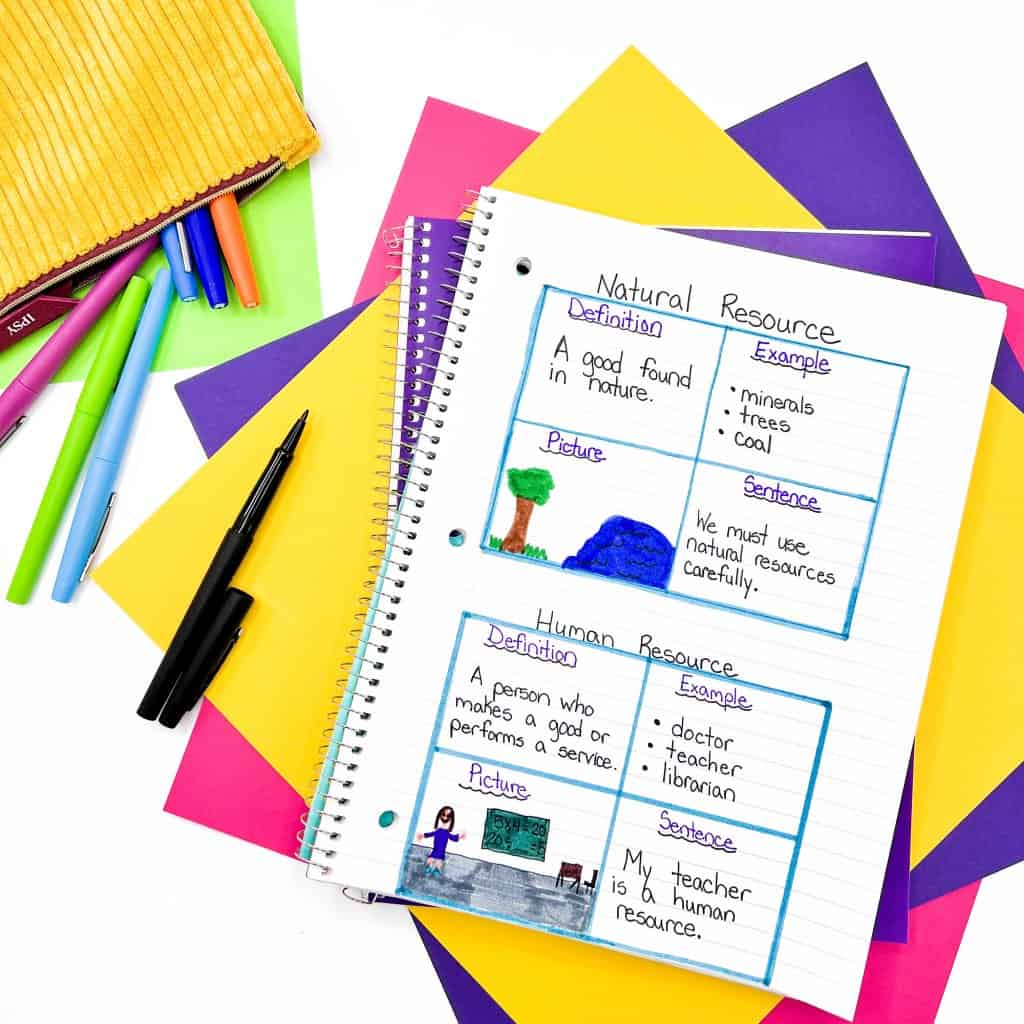
Step 3
Review with games. The first two steps should be short and sweet, and Step 3 is when the fun begins! Anyone who has taught more than a week or two knows that review is essential for students to be able to store and retrieve information from their short term and long term memory. Review shouldn’t be boring. It should be a part of the day students look forward to, not dread. This vocabulary review gives students a basic knowledge base that will allow students to soon develop a deep understanding of those concepts.
I suggest cycling through four games of your choice. Any more than that is hard to manage and create. Four is enough to keep the games novel for students, which prevents them from losing their effectiveness. As you begin to plan your games and the terms reviewed, you will need to decide if you only want to review the words in the particular unit you are studying or if you want your review to be cumulative. I personally like cumulative reviews, because I feel like it prevents students from forgetting some of the more difficult terms. At the beginning of the year, I usually incorporate some second grade grade vocabulary words into our games, because each of the games need 20-30 words.
I Have, Who Has
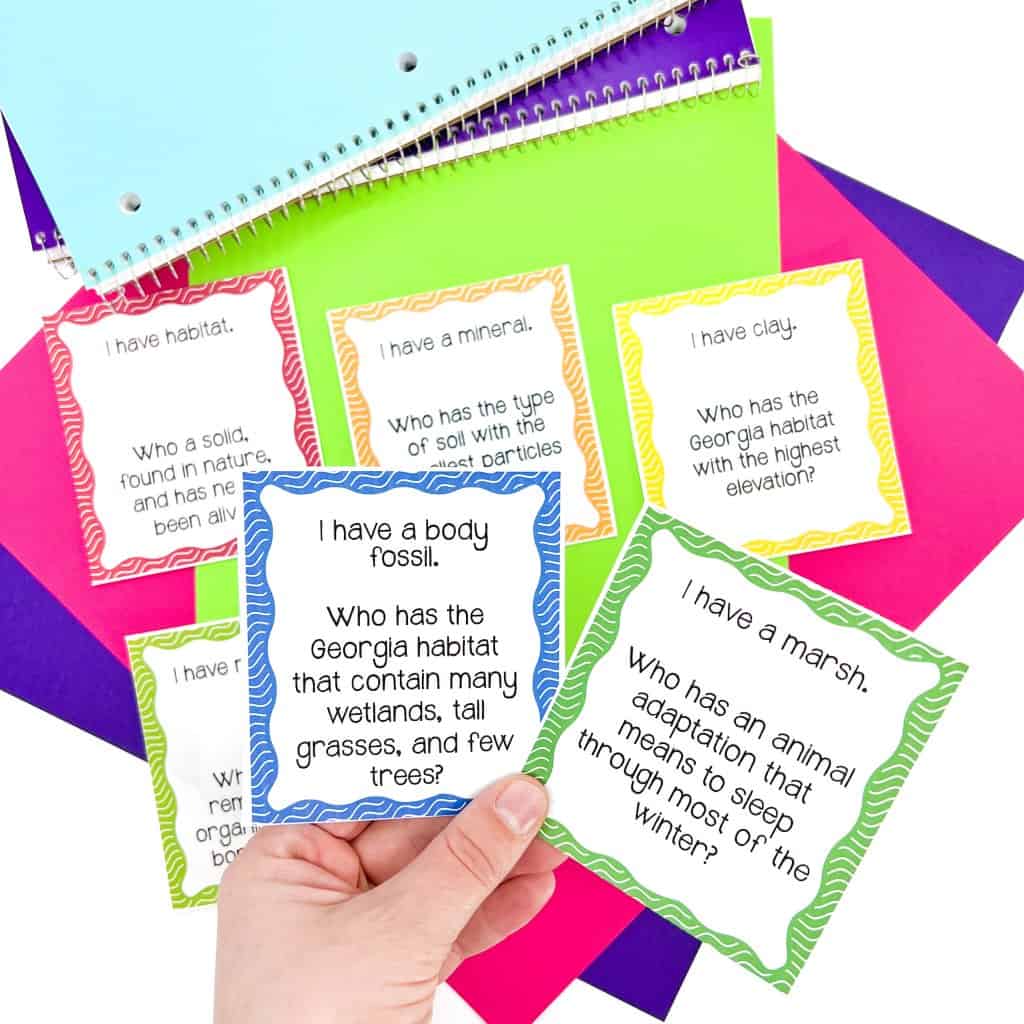
BINGO
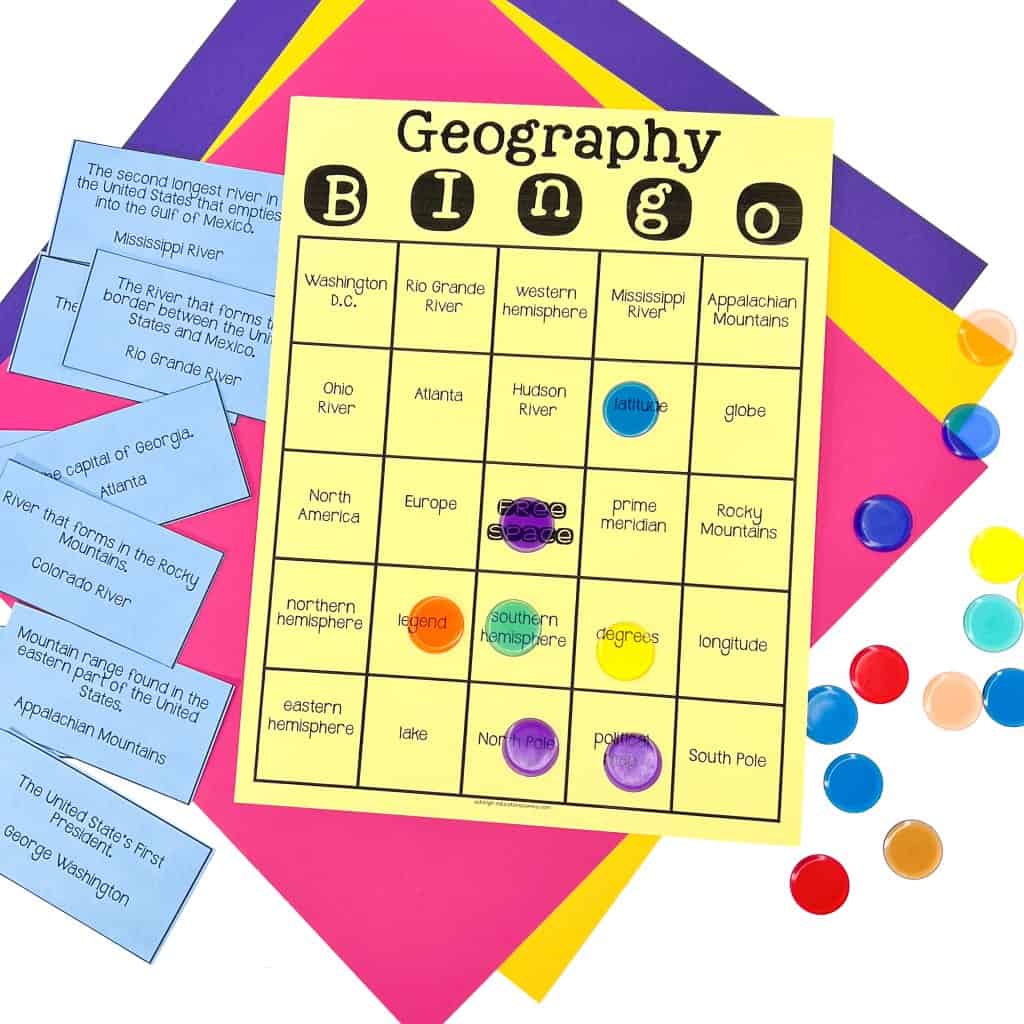
Guess It
Board Games
Word Wall
I also like to display all of my essential science and social studies vocabulary on a work wall. I consolidate math, social studies, and science word walls into one large word wall. I’ve printed large letters that I display across the top of my word wall, and I hang brightly colored ribbon underneath each letter.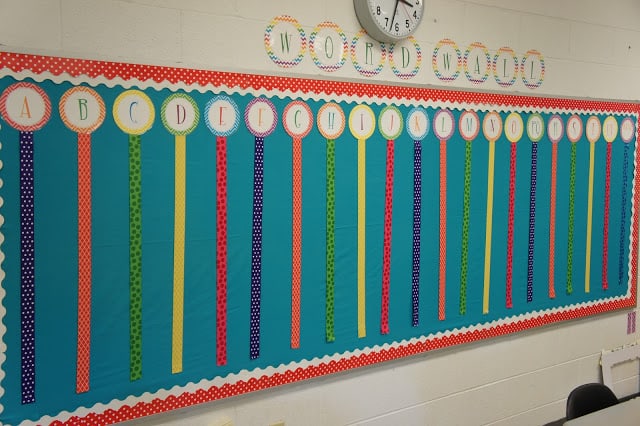
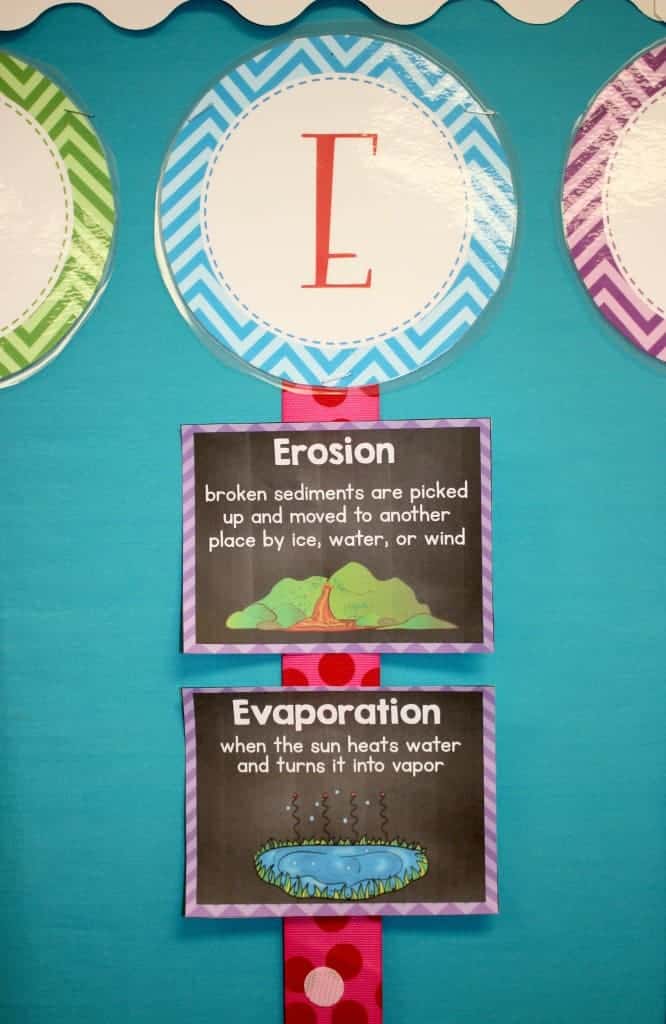
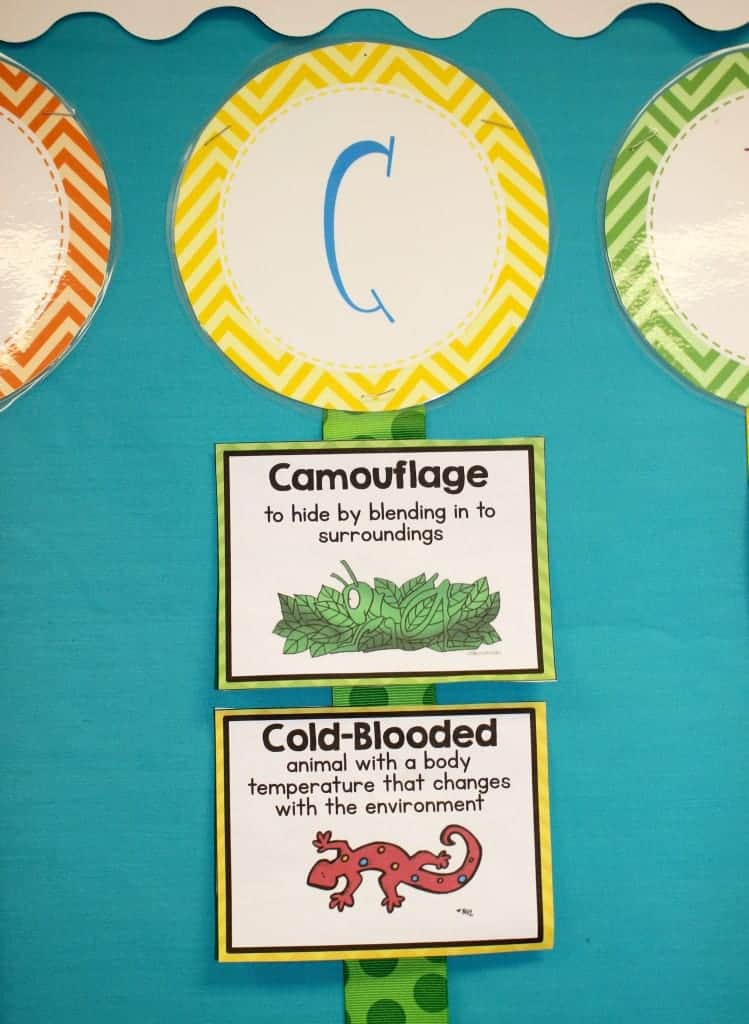
I’ve made a a version with a white background or a chalkboard background. I love the chalkboard version, but I definitely don’t like how much ink it uses!
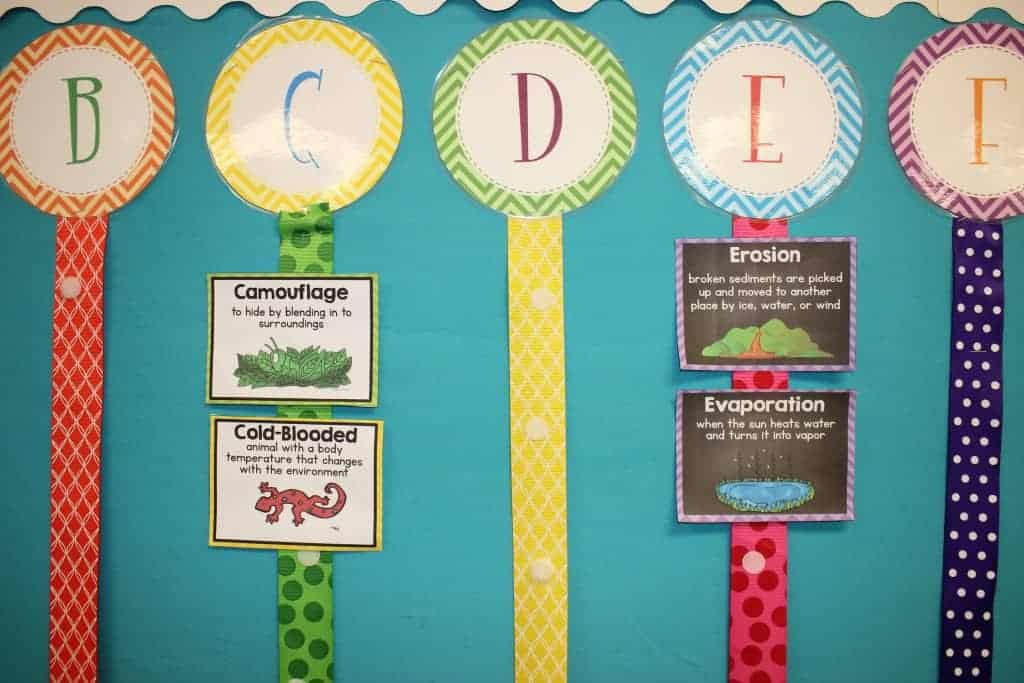
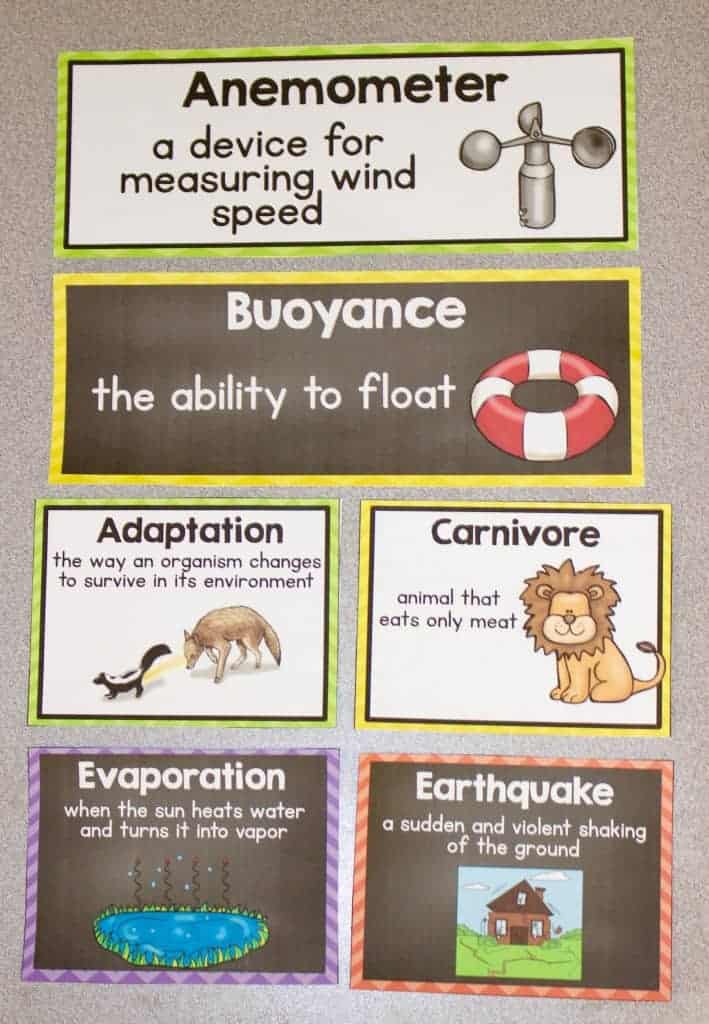
I know it’s a lot, but this first step will make a tremendous impact in your science and social studies instruction.

